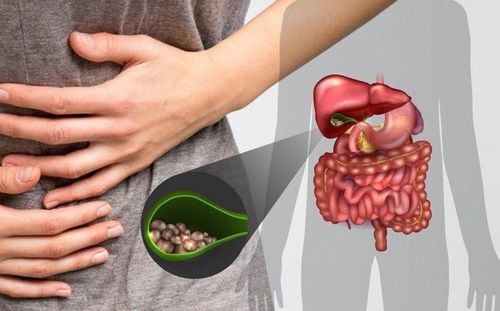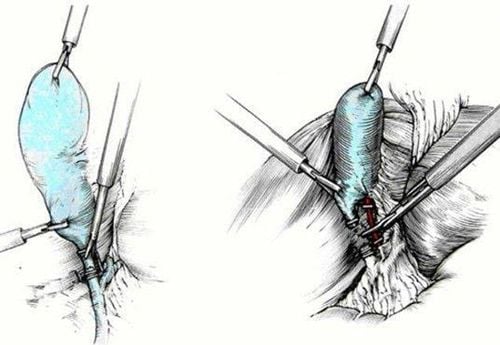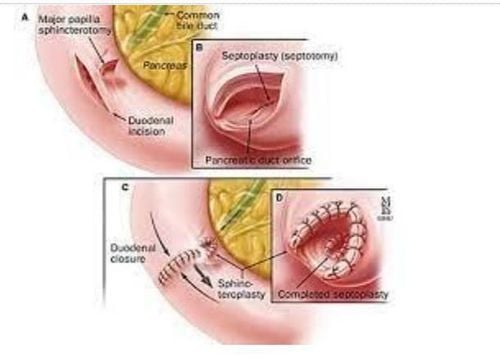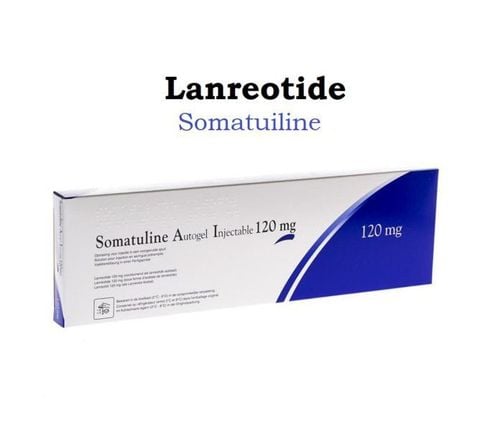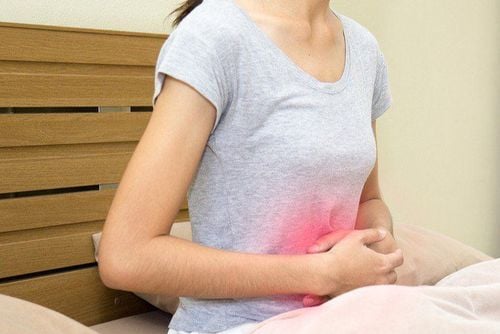This is an automatically translated article.
Acute cholecystitis is a common disease that can progress quickly through 4 stages, the main cause accounting for more than 95% is caused by gallstones. Patients mainly experience symptoms such as pain in the right upper quadrant, fever, digestive disorders, if not treated, in some people can progress and cause dangerous complications.1. What is acute cholecystitis?
Acute cholecystitis is a condition in which the gallbladder mucosa is damaged, causing inflammation of the secretions, the release of inflammatory substances, leading to more severe mucosal damage and anemia, prolonging the inflammation and the risk of serious complications. Gallbladder infection if not controlled can lead to gallbladder necrosis and perforation. Acute cholecystitis and acute gallstone cholecystitis are common in middle-aged to elderly people.Some cases of untreated acute cholecystitis will continue to recur, the gallbladder will become fibrous, shrink and fail to concentrate bile as well as not empty the gallbladder, leading to chronic cholecystitis .
2. Causes of acute cholecystitis
Causes that can lead to acute cholecystitis include:Because gallstones account for 90-95% of the time, when stones are formed in the gallbladder, it will cause bile duct obstruction inside the gallbladder leading to cholecystitis due to gallstones. gravel. Non-stones account for about 5-10% including causes such as: Trauma, Bacterial infections such as E.coli, Enterococcus, Klebsiella and Enterobacter. Typhoid, bacteremia. Cancer, obstruction of the common bile duct leads to obstruction of the cystic duct. Sphincter of Oddi stenosis, ampulla of Vater. Some causes are less common such as Anemia, chemical damage, allergic reactions.
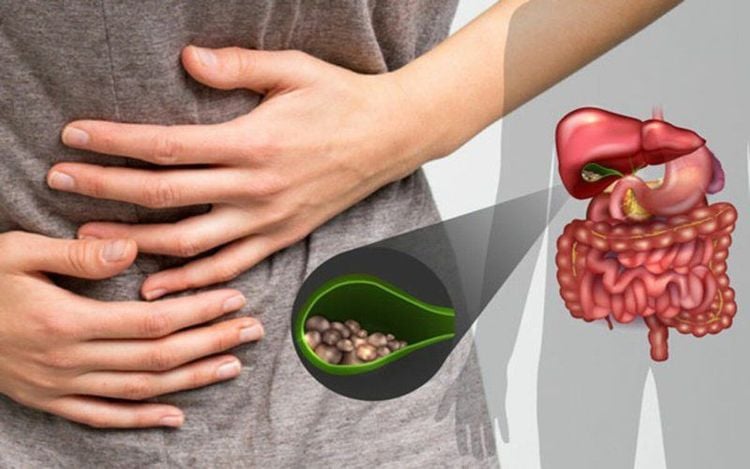
Dấu hiệu viêm túi mật cấp ban đầu thường là đau vùng hạ sườn phải, sốt, rối loạn tiêu hóa
3. Signs of acute cholecystitis
Acute cholecystitis is known in 4 stages such as:Stage 1: Gallbladder distention
Patient has epigastric abdominal pain, cramping pain due to the blockage of stones in the gallbladder neck. Nausea and vomiting: The patient did not have pain relief after vomiting. These signs can be seen in the early stages. Stage 2: Purulent cholecystitis
Continuous abdominal pain localized to the right lower quadrant, possibly back pain or pain in the right shoulder. Body as a Whole: The patient begins to show signs of fever, usually without a high fever during this period. Examination for positive murphy sign: The way to check for murphy sign is to place the tips of the fingers of the right hand on the area below the right flank, when the patient exhales, press the hand deeper, when the patient breathes into the hand keep stable. Performed after 3-4 times like that, while inhaling, the patient stopped breathing because of too much pain called Murphy positive, due to touching the patient's inflamed gallbladder. This sign has a high specificity, however, in some cases of cholecystitis, this sign is not positive, so the sensitivity of this test is not high. Stage 3: Gallbladder necrosis
Sometimes if this condition is acute, it will lead to gallbladder necrosis. At this time, the patient not only has pain localized in the right lower quadrant, but also has pain spreading throughout the abdomen. Body as a whole: The patient has a high fever and is very tired. Examination found: Positive abdominal wall reaction, wall spasticity. Elevated white blood cell count, positive CRP. Stage 4: Perforation of the gallbladder
Usually, if not treated properly, about 10% of patients have severe progression leading to gallbladder perforation, about 48-72 hours after the first signs. Sometimes it can happen earlier in patients with diabetes, arterial occlusive disease ... At this stage, the patient has severe abdominal pain, high fever accompanied by chills, shock syndrome all over the body. toxic infections... need to be treated immediately, otherwise the patient will die from septic shock.
4. Classification of the severity of cholecystitis
The classification of the severity of the disease helps to orient the appropriate treatment, according to the 2013 Tokyo guidelines on the severity of cholecystitis as follows:Mild acute cholecystitis (grade 1)
Gallbladder mild inflammation, only local inflammatory reactions. The patient was well, no organ dysfunction was found. Moderate acute cholecystitis (grade 2): Cholecystitis accompanied by one or more of the following criteria
Duration of symptom onset greater than 72 hours WBC over 18 G/l. Palpable mass in the right lower quadrant. Local inflammatory lesions: localized biliary peritonitis, gallbladder abscess, liver abscess, gallbladder necrosis, gallbladder gangrene... Severe acute cholecystitis (grade 3): Accompanied inflammation of the gallbladder dysfunction of one or more organs such as: Cardiovascular dysfunction in patients with hypotension requiring treatment with dopamine ≥5mcg/kg/min or any dose of Dopamine. Neurological dysfunction impairs the level of consciousness. Respiratory dysfunction when the PaO2/FiO2 ratio < 300. Renal dysfunction, oliguria, creatinine > 2mg/dl) Liver dysfunction (PT INR > 1.5) Hematologic disorders when platelets reduce < 100,000/mm3.
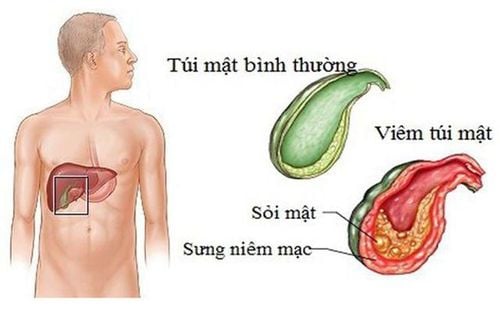
Viêm túi mật cấp do sỏi thường gặp ở những người độ tuổi trung niên tới cao tuổi
5. How to treat cholecystitis
Treatment options for cholecystitis depend on the severity of the disease and response to treatment. Treatment may include medical therapy, percutaneous gall bladder drainage, and surgery.5.1 Medical treatment The patient fasts, inserts a gastric tube, receives intravenous fluids. The drug inhibits acid secretion, reduces oddi sphincter spasm. Painkillers, antipyretics and antibiotics are indicated for treatment. Monitor the patient throughout the course of treatment. 5.2 Percutaneous gall bladder drainage This method can be used as an alternative to surgery when the patient cannot perform surgery. Indicated in the following cases:
Patients with severe acute cholecystitis (grade 3) with an indication for gallbladder drainage. Acute cholecystitis is indicated for surgery in patients at high risk of surgical complications. There are indications for surgery but there are contraindications to surgical methods. Moderate acute cholecystitis (grade 2): Gallbladder drainage is indicated when not responding to conventional medical therapy. Failure after performing medical treatment from 24-48 hours. Cases of moderate severity but with prognostic factors for ineffective medical treatment such as: patients aged over 70 years, diabetes mellitus, tachycardia... Gallbladder drainage is quite safe, with few complications. However, it can also cause complications such as bleeding, infection, bile leak.
5.3 Surgery Indications: Young patients, good health, no indications for surgery, surgery before 48 hours early and severe inflammation of the gallbladder in the purulent or necrotic stage should undergo cholecystectomy. Surgery can be performed after percutaneous gallbladder drainage, if there are no complications from previous procedures.
When surgery can lead to some complications such as: Biliary tract injury, damage to other organs, wound infection, intestinal obstruction after surgery, bleeding, thromboembolism, urinary tract infection pee.
Acute cholecystitis can lead to life-threatening complications if not treated early and properly, some can lead to chronic cholecystitis. Therefore, when there are symptoms of suspected disease, it is advisable to go to medical facilities for early and proper treatment.
Please dial HOTLINE for more information or register for an appointment HERE. Download MyVinmec app to make appointments faster and to manage your bookings easily.




